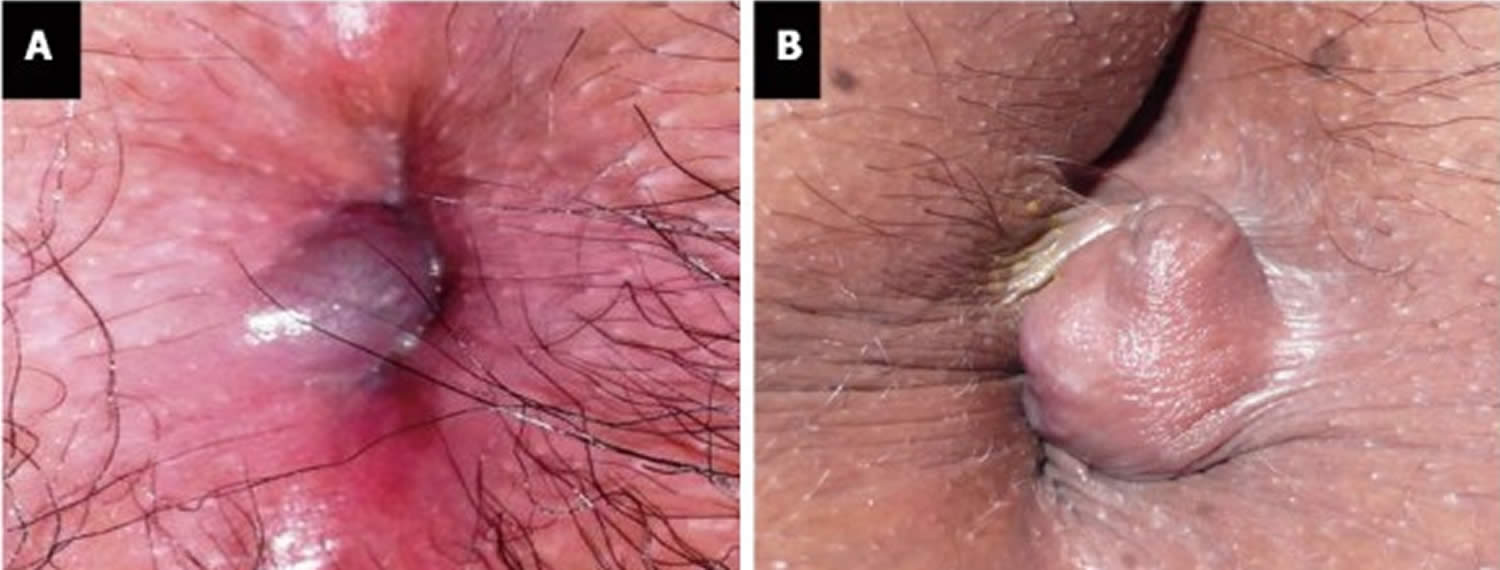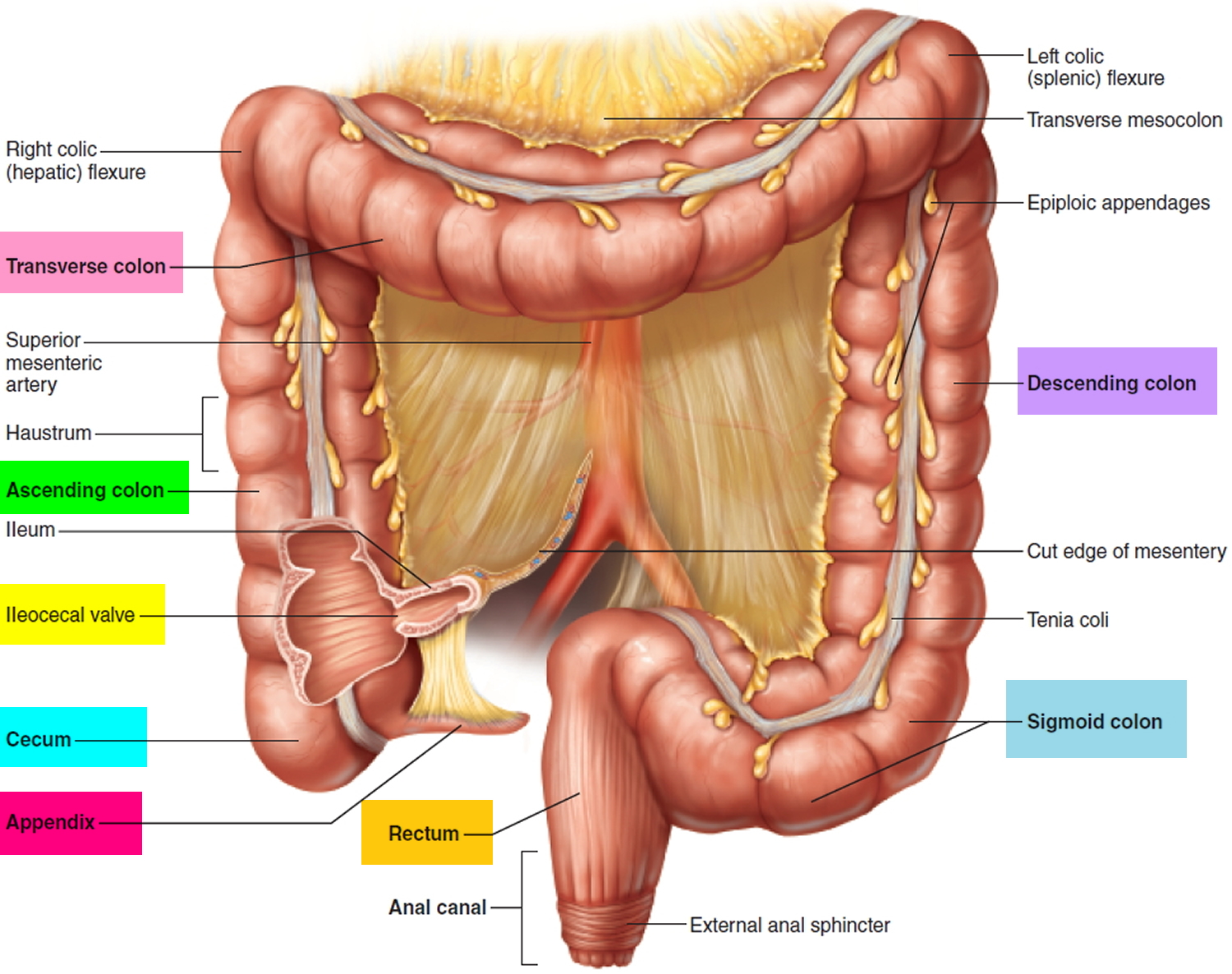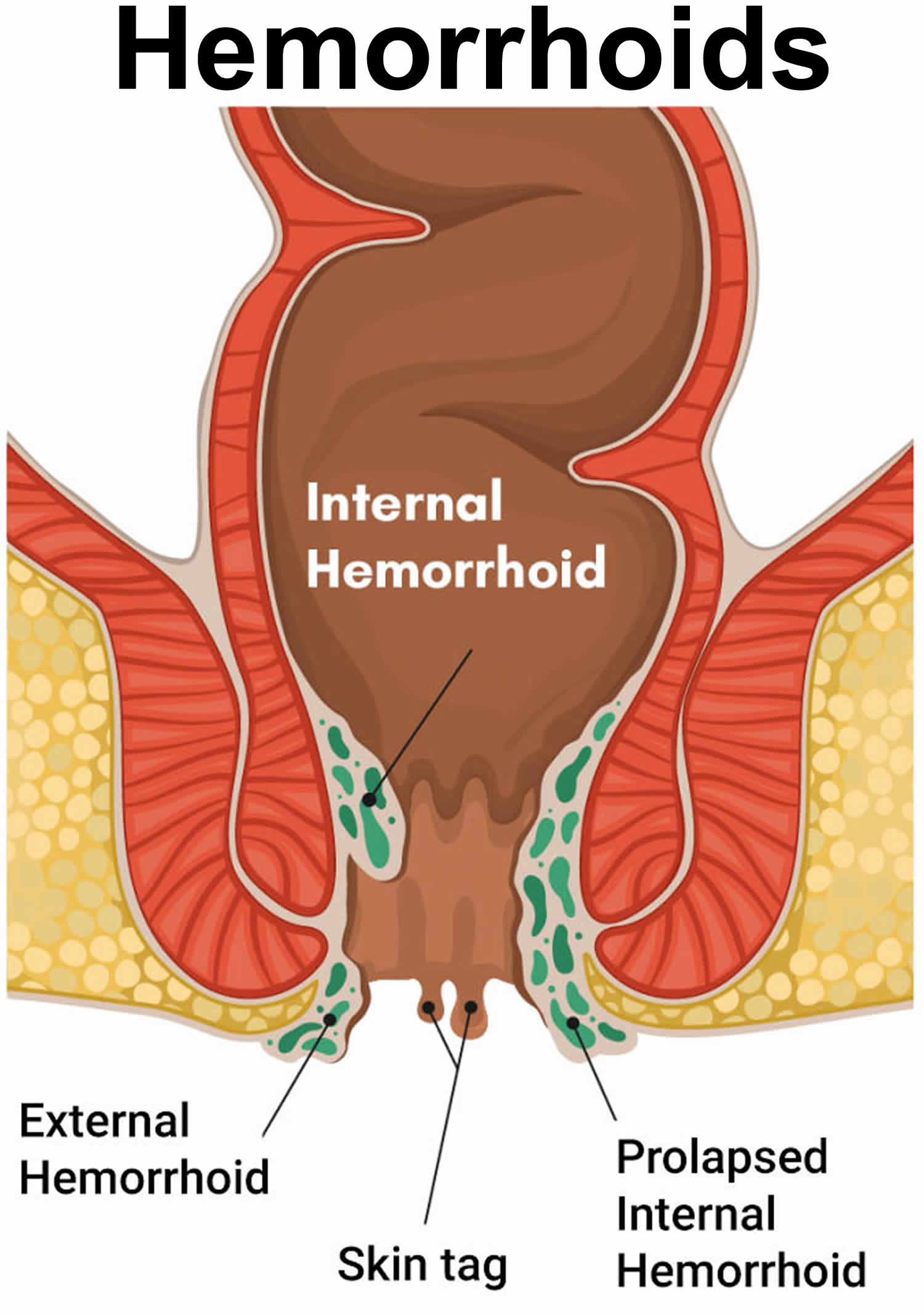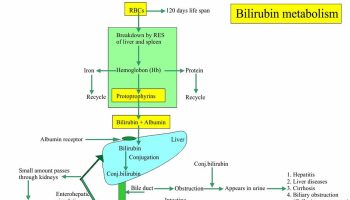Contents
Perianal hematoma
Perianal hematoma is a collection of blood in the perianal area caused by a ruptured vein or acutely thrombosed external hemorrhoid. If a painful blood clot has formed within an external hemorrhoid, your health care provider can remove the hemorrhoid. Removal can provide relief right away. This procedure, done with a medicine that numbs a part of the body, also called a local anesthetic, works best when done within 48 to 72 hours of getting a clot.
Hemorrhoids is recognized as one of the most common medical conditions in general population and external hemorrhoid is a benign condition 1, 2, 3, 4. External hemorrhoids occur outside the anus. They can result in difficulty cleaning the area after a bowel movement. Hemorrhoids are most often not painful, but if a blood clot forms in an external hemorrhoid, it can be very painful (thrombosed external hemorrhoid).
Acutely thrombosed external hemorrhoid must be differentiated from complicated internal hemorrhoids and, sometimes, from anal pigmented melanoma 5. A practical point is that the external hemorrhoid is covered by anoderm (skin around the anus) and the clot formation is lying beneath the skin 5. In contrast, internal hemorrhoid is covered by anal mucosa and anal pigmented melanoma presents with a longer history of dark pigmented skin lesion 5.
Perianal hematoma caused by thrombosed external hemorrhoid can be treated conservatively or surgically depending on patient’s symptoms mainly the intensity of present pain 5. Surgical excision of thrombosed external hemorrhoid or surgical removal of clot is reserved in patients experiencing severe pain – usually within 48 to 72 hours of onset 5. Otherwise, conservative management would be offered including anti-inflammatory analgesics, warm sitz bath, reducing activity and avoiding constipation.
The anus
The anus is connected to the rectum by the anal canal. The anus is the continuation of the large intestine (the colon or large bowel) inferior to the rectum. It’s where the end of the intestines connect to the outside of the body.
The anal canal is about 1-1/2 inches (about 3 to 5 cm) long, it begins where the rectum passes through the levator ani (the muscle that forms the pelvic floor) and goes to the anal verge. The anal verge is where the anal canal connects to the outside skin at the anus. This skin around the anal verge is called the perianal skin (previously called the anal margin). The anal canal has two ring-shaped muscles (called sphincter muscles – an internal and external anal sphincter) that keep the anus closed and prevent stool from leaking out.
As food is digested, it passes from the stomach to the small intestine. It then moves from the small intestine into the main part of the large intestine (called the colon). The colon absorbs water and salt from the digested food. The waste matter that’s left after going through the colon is known as feces or stool. Stool is stored in the last part of the large intestine, called the rectum. From there, stool is passed out of the body through the anus as a bowel movement.
The inner lining of the anal canal is the mucosa. Most anal cancers start from cells in the mucosa. Glands and ducts (tubes leading from the glands) are found under the mucosa. The glands make mucus, which acts as a lubricating fluid. Anal cancers that start from cells in the glands are called adenocarcinomas.
The anal canal changes as it goes from the rectum to the anal verge. The parts of the anus include the:
- Cells above the anal canal (in the rectum) and in the part of the anal canal close to the rectum are shaped like tiny columns.
- Most cells near the middle of the anal canal are shaped like cubes and are called transitional cells. This area is called the transitional zone – this is where the rectum meets the anal canal.
- About midway down the anal canal is the dentate line, which is where most of the anal glands empty into the anus.
- Below the dentate line are flat (squamous) cells.
- At the anal verge, the squamous cells of the lower anal canal merge with the skin just outside the anus. This skin around the anal verge called the perianal skin or the anal margin, is also made up of squamous cells, but it also contains sweat glands and hair follicles, which are not found in the lining of the lower anal canal. The anal margin is the lower part of the anal canal and it contains muscles called the anal sphincters. You have an internal and external anal sphincter. They are the muscles that control your bowel movements.
Figure 1. Rectum
Figure 2. Anus anatomy
Figure 3. Hemorrhoids
Figure 4. Perianal hematoma
Footnote: (A and B) Acutely thrombosed external hemorrhoid.
[Source 5 ]What are hemorrhoids?
Hemorrhoids also called piles, are swollen, inflamed veins around the anus and lower rectum 6. Hemorrhoids are either inside the anus or under the skin around the anus. Hemorrhoids have a number of causes, although often the cause is unknown. They often result from straining to have a bowel movement or from the increased pressure on these veins during pregnancy. Other factors include aging and chronic constipation or diarrhea. Hemorrhoids may be located inside the rectum (internal hemorrhoids), or they may develop under the skin around the anus (external hemorrhoids).
If you have a hemorrhoid, you may feel a tender lump on the edge of your anus. You may also see blood on the toilet paper or in the toilet after a bowel movement.
Hemorrhoids are very common in both men and women. Nearly half of Americans have hemorrhoids by age 50 7. Nearly 5% of the US population (15,000,000 people) has sought medical care for symptomatic hemorrhoids. Many more have problems with hemorrhoids, but never seek formal medical attention.
The most common symptom of hemorrhoids inside the anus is bright red blood covering the stool, on toilet paper or in the toilet bowl. Symptoms usually go away within a few days.
- If you have rectal bleeding you should see a doctor.
- You need to make sure bleeding is not from a more serious condition such as colorectal or anal cancer.
Sometimes hemorrhoids don’t cause symptoms but at other times hemorrhoids cause itching, discomfort and bleeding.
Occasionally, a clot may form in a hemorrhoid (thrombosed hemorrhoid). These are not dangerous but can be extremely painful and sometimes need to be lanced and drained.
Treatment may include warm baths and a cream or other medicine.
If you have large hemorrhoids, you may need surgery and other treatments.
Types of hemorrhoids
The type of hemorrhoid you have depends on where it occurs.
- Internal hemorrhoids involve the veins inside your rectum. Internal hemorrhoids usually don’t hurt but they may bleed painlessly.
- Prolapsed hemorrhoids may stretch down until they bulge outside your anus. A prolapsed hemorrhoid may go back inside your rectum on its own, or you can gently push it back inside.
- External hemorrhoids involve the veins outside the anus. They can be itchy or painful and can sometimes crack and bleed.
Classification of a hemorrhoid corresponds to its position relative to the dentate line. External hemorrhoids are located below the dentate line and develop from ectoderm embryonically 8. External hemorrhoids are covered with anoderm, composed of squamous epithelium, and are innervated by somatic nerves supplying the perianal skin and thus producing pain. Vascular outflows of external hemorrhoids are via the inferior rectal veins into the pudendal vessels and then into the internal iliac veins. In contrast, internal hemorrhoids lie above the dentate line and are derived from endoderm 8. They are covered by columnar epithelium, innervated by visceral nerve fibers and thus cannot cause pain. Vascular outflows of internal hemorrhoids include the middle and superior rectal veins, which subsequently drain into the internal iliac vessels.
Internal hemorrhoids
Painless rectal bleeding or prolapse of anal tissue is often associated with symptomatic internal hemorrhoids. Prolapse is hemorrhoidal tissue coming from the inside that can often be felt on the outside of the anus when wiping or having a bowel movement. This tissue often goes back inside spontaneously or can be pushed back internally by the patient. The symptoms tend to progress slowly over a long time and are often intermittent.
Internal hemorrhoids are classified by their degree of prolapse, which helps determine management 9, 10:
- Grade One: No prolapse out of the canal but are characterized by prominent vascularity.
- Grade Two: Prolapse outside of the canal during bowel movements or straining, but reduce spontaneously.
- Grade Three: Prolapse out of the canal and require manual reduction (pushed back in) by the patient
- Grade Four: Prolapse that cannot be pushed back in by the patient (often very painful)
Bleeding attributed to internal hemorrhoids is usually bright red and can be quite brisk. It may be found on the wipe, dripping into the toilet bowl, or streaked on the bowel movement itself. Not all people with symptomatic internal hemorrhoids will have significant bleeding. Instead, prolapse may be the main or only symptom. Prolapsing tissue may result in significant irritation and itching around the anus. People with internal hemorrhoids may also complain of mucus discharge, difficulty with cleaning themselves after a bowel movement or a sense that their stool is “stuck” at the anus with bowel movements. People without significant symptoms from internal hemorrhoids do not require treatment based on their appearance alone.
Most patients with grade 1 or 2 hemorrhoids, and many with grade 3 hemorrhoids, can be treated in primary care offices. Patients in whom office-based treatment is ineffective (see below under Treatment) and those with mixed hemorrhoids may require treatment in surgical suites with facilities for anesthesia. The most common surgical treatments are ligation or tissue destruction, fixation techniques (i.e., hemorrhoidopexy – hemorrhoid stapling), and excision (i.e., hemorrhoidectomy).
External hemorrhoids
Symptomatic external hemorrhoids often present as a bluish-colored painful lump just outside the anus and they tend to occur spontaneously and may have been preceded by an unusual amount of straining. The skin overlying the outside of the anus is usually firmly attached to the underlying tissues. If a blood clot or thrombosis develops in this tightly held area, the pressure goes up rapidly in these tissues often causing pain. The pain is usually constant and can be severe. Occasionally the elevated pressure in the thrombosed external hemorrhoid results in breakdown of the overlying skin and the clotted blood begins leaking out. Patients may also complain of intermittent swelling, pressure and discomfort, related to external hemorrhoids which are not thrombosed.
Thrombosed external hemorrhoids
Thrombosed external hemorrhoids cause acute, severe pain. Without intervention, the pain typically improves over two to three days, with continued improvement as the thrombus gradually absorbs over several weeks. Analgesics and stool softeners may be beneficial. Topical therapy with nifedipine and lidocaine cream is more effective for pain relief than lidocaine (Xylocaine) alone 11.
In patients with severe pain from thrombosed hemorrhoids, excision or incision and evacuation of the thrombus within 72 hours of symptom onset provide more rapid pain relief than conservative treatment 12. Both procedures can be performed under local anesthesia, and the resulting wound can be left open or sutured 13.
Hemorrhoids in Pregnancy
Pregnancy predisposes women to symptomatic hemorrhoids that usually resolve after delivery. Surgical intervention is contraindicated because of the risk of inducing labor 14. Conservative treatment is recommended, with excision of thrombosed external hemorrhoids if necessary.
Patients often complain of painless, soft tissue felt on the outside of the anus. These can be the residual effect of a previous problem with an external hemorrhoid. The blood clot stretches out the overlying skin and remains stretched out after the blood clot is absorbed by the body, thereby leaving a skin tag. Other times, patients will have skin tags without an obvious preceding event. Skin tags will occasionally bother patients by interfering with their ability to clean the anus following a bowel movement, while others just don’t like the way they look. Usually, nothing is done to treat them beyond reassurance. However, surgical removal is occasionally considered.
Perianal hematoma causes
Hemorrhoids are caused by increased pressure in the veins of your anus or rectum. One of the main causes is straining when you’re trying to have a bowel movement. This may happen if you’re constipated or if you have diarrhea. It may also happen if you sit on the toilet too long. Hemorrhoids can also be caused by obesity, heavy lifting or any other activity that caused you to strain.
The veins around your anus tend to stretch under pressure and may bulge or swell. Swollen veins (hemorrhoids) can develop from increased pressure in the lower rectum due to:
- Straining during bowel movements
- Sitting for long periods of time on the toilet
- Chronic diarrhea or constipation
- Obesity
- Pregnancy
- Anal intercourse
- Low-fiber diet
Hemorrhoids are more likely with aging because the tissues that support the veins in your rectum and anus can weaken and stretch.
Hemorrhoids prevention
The best way to prevent hemorrhoids is to keep your stools soft, so they pass easily. To prevent hemorrhoids and reduce symptoms of hemorrhoids, follow these tips:
- Eat high-fiber foods. Eat more fruits, vegetables and whole grains. Doing so softens the stool and increases its bulk, which will help you avoid the straining that can cause hemorrhoids. Add fiber to your diet slowly to avoid problems with gas.
- Drink plenty of fluids. Drink six to eight glasses of water and other liquids (not alcohol) each day to help keep stools soft.
- Consider fiber supplements. Most people don’t get enough of the recommended amount of fiber — 25 grams a day for women and 38 grams a day for men — in their diet. Studies have shown that over-the-counter fiber supplements, such as Metamucil and Citrucel, improve overall symptoms and bleeding from hemorrhoids. These products help keep stools soft and regular. If you use fiber supplements, be sure to drink at least eight glasses of water or other fluids every day. Otherwise, the supplements can cause constipation or make constipation worse.
- Don’t strain. Straining and holding your breath when trying to pass a stool creates greater pressure in the veins in the lower rectum.
- Go as soon as you feel the urge. If you wait to pass a bowel movement and the urge goes away, your stool could become dry and be harder to pass.
- Exercise. Stay active to help prevent constipation and to reduce pressure on veins, which can occur with long periods of standing or sitting. Exercise can also help you lose excess weight that may be contributing to your hemorrhoids.
- Avoid long periods of sitting. Sitting too long, particularly on the toilet, can increase the pressure on the veins in the anus.
Perianal hematoma symptoms
Classic symptoms of acutely thrombosed external hemorrhoid are acute anal pain due to activation of perianal innervations associated with thrombosis with a newly enlarged or tender bluish lump at the anal verge. Patients typically describe a painful perianal mass that is tender to palpation. This painful mass may be initially increasing in size and severity over time. Some patients may give a history of recent constipation or prolonged straining. Acutely thrombosed external hemorrhoid usually causes severe pain in the first couple of days and the pain will gradually subside thereafter. High pressure within the thrombus may cause the erosion of overlying skin from necrosis of the thrombosed hemorrhoid and thus resulting in bleeding and this blood tends to be darker and more clotted than the bleeding from internal hemorrhoid. Painless external skin tags often result from previous edematous or thrombosed external hemorrhoids.
Perianal hematoma diagnosis
Rectal pain and bleeding should never be blindly attributed to hemorrhoids. A thorough history and physical examination is required to help identify any possible alternative diagnosis, and the possibility of a more insidious cause of rectal bleeding should always be considered. Most of the time, your doctor can diagnose hemorrhoids by simply looking at the rectal area. External hemorrhoids can often be detected this way.
Tests and procedures to diagnose internal hemorrhoids may include examination of your anal canal and rectum:
- Rectal exam. During a digital rectal exam, your doctor inserts a gloved, lubricated finger into your rectum. He or she feels for anything unusual, such as growths. The exam can suggest to your doctor whether further testing is needed.
- Visual inspection. Because internal hemorrhoids are often too soft to be felt during a rectal exam, your doctor may also examine the lower portion of your colon and rectum with an anoscope, proctoscope or sigmoidoscope.
Your doctor may want to examine your entire colon using colonoscopy if:
- Your signs and symptoms suggest you might have another digestive system disease
- You have risk factors for colorectal cancer
- You’re middle-aged and haven’t had a recent colonoscopy.
The American Society of Colon and Rectal Surgeons recommends taking the patient history and performing a physical examination with anoscopy and further endoscopic evaluation if there is concern for inflammatory bowel disease or cancer 15. A complete evaluation of the colon is warranted in the following groups 15:
- Patients who are 50 years or older and have not had a complete examination of the colon within the past 10 years
- Patients who are 40 years or older and have not had a complete examination of the colon within the past 10 years, and who have one first-degree relative in whom colorectal cancer or adenoma was diagnosed at age 60 years or younger
- Patients who are 40 years or older and have not had a complete examination of the colon within the past five years, and who have more than one first-degree relative in whom colorectal cancer or adenoma was diagnosed at age 60 years or younger
- Patients with iron deficiency anemia
- Patients who have a positive fecal occult blood test.
Perianal hematoma treatment
Perianal hematoma caused by thrombosed external hemorrhoid can be treated conservatively or surgically depending on patient’s symptoms mainly the intensity of present pain 5. Surgical excision of thrombosed external hemorrhoid or surgical removal of clot is reserved in patients experiencing severe pain – usually within 48 to 72 hours of onset 5, 16. Otherwise, conservative management would be offered including anti-inflammatory analgesics, warm sitz bath, reducing activity and avoiding constipation. Because, after 48 to 72 hours, organization of the clot and reduction of symptoms generally obviates the need for surgical evacuation, which is consistent with the natural history of hemorrhoidal thrombosis. After the initial 72-hour window, the pain typically plateaus and slowly improves, at which point the pain from hemorrhoid excision would exceed the pain from the thrombosis itself 8.
Home remedies
You can often relieve the mild pain, swelling and inflammation of hemorrhoids with home treatments. Often these are the only treatments needed.
Treatments for hemorrhoids include:
- Eat high-fiber foods. Eat more fruits, vegetables and whole grains – it is usually recommended you eat 20-35 grams of fiber per day. Doing so softens the stool and increases its bulk, which will help you avoid the straining that can worsen symptoms from existing hemorrhoids. Add fiber to your diet slowly to avoid problems with gas.
- Stool softeners to help reduce straining and constipation
- Use topical treatments. Apply an over-the-counter hemorrhoid cream or suppository containing hydrocortisone, or use pads containing witch hazel or a numbing agent to help reduce pain and swelling. Hemorrhoid creams with lidocaine to help reduce pain
- Soak regularly in a warm bath or sitz bath. Soak your anal area in plain warm water 10 to 15 minutes two to three times a day. A sitz bath fits over the toilet.
- Keep the anal area clean. Bathe (preferably) or shower daily to cleanse the skin around your anus gently with warm water. Avoid alcohol-based or perfumed wipes. Gently pat the area dry or use a hair dryer.
- Wear cotton underwear.
- Don’t use dry toilet paper. To help keep the anal area clean after a bowel movement, use moist towelettes or wet toilet paper that doesn’t contain perfume or alcohol.
- Apply cold. Apply ice packs or cold compresses on your anus to relieve swelling.
- Take oral pain relievers. You can use acetaminophen (Tylenol, others), aspirin or ibuprofen (Advil, Motrin IB, others) temporarily to help relieve your discomfort.
With these treatments, hemorrhoid symptoms often go away within a week. See your doctor if you don’t get relief in a week, or sooner if you have severe pain or bleeding.
Medications
If your hemorrhoids produce only mild discomfort, your doctor may suggest over-the-counter creams, ointments, suppositories or pads. These products contain ingredients, such as witch hazel, or hydrocortisone and lidocaine, that can relieve pain and itching, at least temporarily.
Don’t use an over-the-counter steroid cream for more than a week unless directed by your doctor because it may cause your skin to thin.
- Lohsiriwat V. Approach to hemorrhoids. Curr Gastroenterol Rep. 2013 Jul;15(7):332. doi: 10.1007/s11894-013-0332-6[↩]
- Lohsiriwat V. Hemorrhoids: from basic pathophysiology to clinical management. World J Gastroenterol. 2012 May 7;18(17):2009-17. doi: 10.3748/wjg.v18.i17.2009[↩]
- Lohsiriwat V. Treatment of hemorrhoids: A coloproctologist’s view. World J Gastroenterol. 2015 Aug 21;21(31):9245-52. doi: 10.3748/wjg.v21.i31.9245[↩]
- Everhart JE, Ruhl CE. Burden of digestive diseases in the United States part I: overall and upper gastrointestinal diseases. Gastroenterology. 2009 Feb;136(2):376-86. doi: 10.1053/j.gastro.2008.12.015[↩]
- Lohsiriwat V. Anorectal emergencies. World J Gastroenterol. 2016 Jul 14;22(26):5867-78. doi: 10.3748/wjg.v22.i26.5867[↩][↩][↩][↩][↩][↩][↩][↩]
- Hemorrhoids. Medline Plus. https://medlineplus.gov/hemorrhoids.html[↩]
- Hemorrhoids and Other Anal Disorders. American College of Gastroenterology. http://patients.gi.org/topics/hemorrhoids-and-other-anal-disorders/[↩]
- Sun Z, Migaly J. Review of Hemorrhoid Disease: Presentation and Management. Clin Colon Rectal Surg. 2016 Mar;29(1):22-9. doi: 10.1055/s-0035-1568144[↩][↩][↩]
- Hemorrhoids. American Society of Colon and Rectal Surgeons. https://www.fascrs.org/patients/disease-condition/hemorrhoids-expanded-version[↩]
- Banov L Jr, Knoepp LF Jr, Erdman LH, Alia RT. Management of hemorrhoidal disease. J S C Med Assoc. 1985 Jul;81(7):398-401.[↩]
- Perrotti P, Antropoli C, Molino D, De Stefano G, Antropoli M. Conservative treatment of acute thrombosed external hemorrhoids with topical nifedipine. Dis Colon Rectum. 2001;44(3):405–409.[↩]
- Greenspon J, Williams SB, Young HA, Orkin BA. Thrombosed external hemorrhoids: outcome after conservative or surgical management. Dis Colon Rectum. 2004;47(9):1493–1498.[↩]
- Zuber TJ. Hemorrhoidectomy for thrombosed external hemorrhoids. Am Fam Physician. 2002;65(8):1629–1632.[↩]
- Hemorrhoids. Am Fam Physician. 2011 Jul 15;84(2):204-210. http://www.aafp.org/afp/2011/0715/p204.html[↩]
- Cataldo P, Ellis CN, Gregorcyk S, et al.; Standards Practice Task Force, The American Society of Colon and Rectal Surgeons, USA. Practice parameters for the management of hemorrhoids (revised). Dis Colon Rectum. 2005;48(2):189–194.[↩][↩]
- Aigner F, Gruber H, Conrad F, Eder J, Wedel T, Zelger B, Engelhardt V, Lametschwandtner A, Wienert V, Böhler U, Margreiter R, Fritsch H. Revised morphology and hemodynamics of the anorectal vascular plexus: impact on the course of hemorrhoidal disease. Int J Colorectal Dis. 2009 Jan;24(1):105-13. doi: 10.1007/s00384-008-0572-3[↩]








